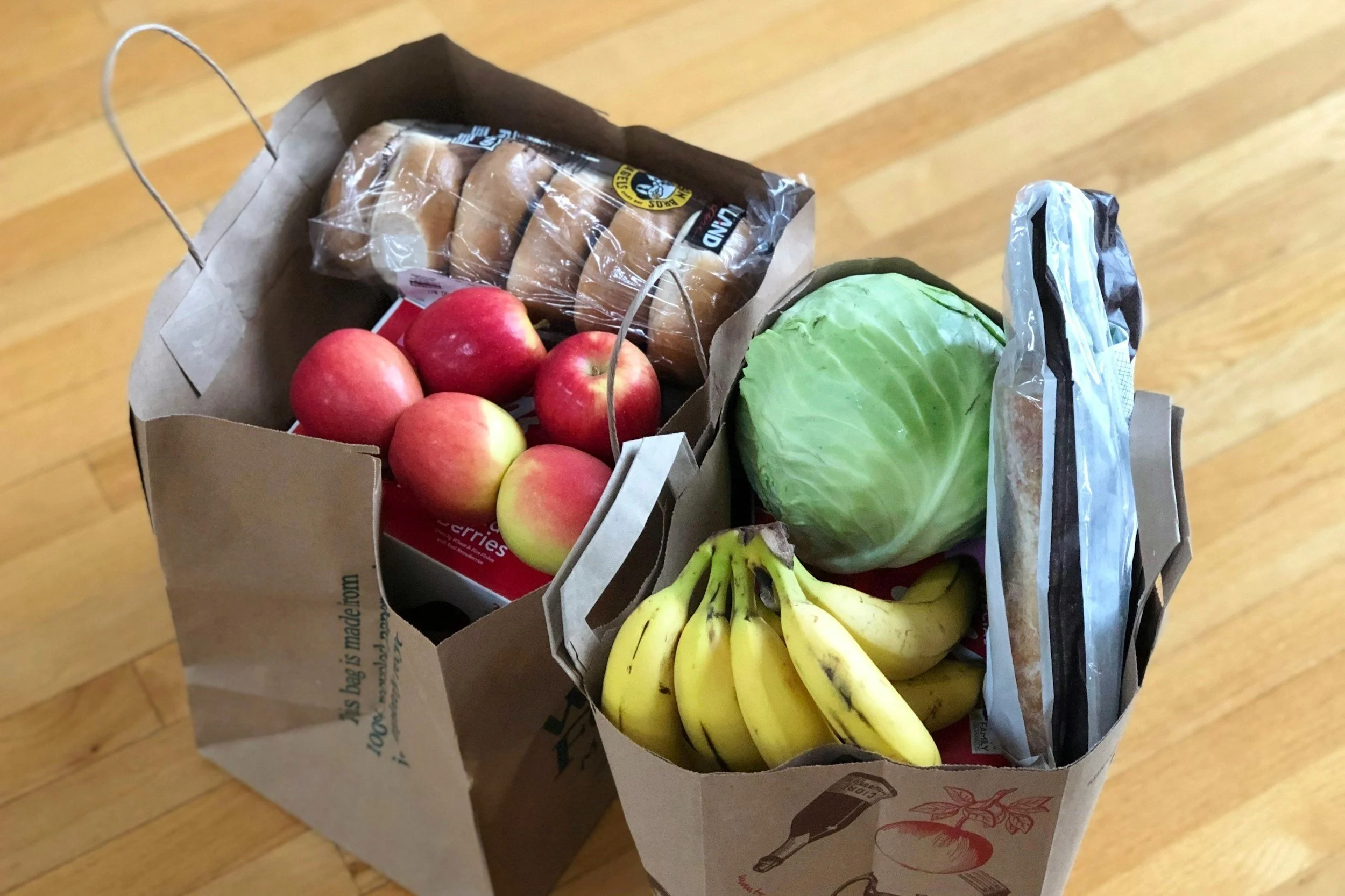Unpacking the hidden harms of nutrition labels
This past week, a few publications published news that anyone with a basic understanding of eating disorders has known for decades: Nutrition labels on food packaging and menus are harmful for people with eating disorders.
According to these (less than) groundbreaking revelations:
Calorie labels tend to heighten anxiety around social eating.
Different eating disorder subtypes respond differently to nutrition labels—individuals with anorexia nervosa tend to be the most sensitive.
Although intended to help people make “healthier” choices about what they consume, nutrition labels might exacerbate the issues they’re meant to solve.
How did we get here? Why are calorie counts everywhere? And what can be done about it? Let’s explore.
Where did nutrition labels come from?
Shockingly, the presence of nutrition labels on our food packaging is a fairly recent practice. Nutrition labels originally appeared in 1994 and have evolved over the years. After the passing of the Nutrition Labeling and Education Act (NLEA) in 1990 in an effort to “help consumers make better choices and encourage food companies to produce healthier foods”, food packages were required to show a standardized Nutrition Facts label that publicized the contents of food, including the amount of elements like:
serving size
calories
grams of fat, saturated fat
total carbohydrates
fiber
sugar
protein
certain vitamins and minerals
While largely unchanged in the past three decades, nutrition labels did undergo a bit of a revamp in 2020 when serving sizes were increased: “Because the amounts for some items that people eat and drink has significantly changed since [1993], serving sizes for those packaged foods have been updated to reflect more current consumption habits.” Source
In addition to increased serving sizes, the “calories” display on packaging got a bit of a makeover: The number is now bigger and bolder, the reason for which is attributed to rising obesity rates (per the Centers for Disease Control and Prevention [CDC]) between 2000 and 2018. If consumers know how many calories are in their food, the CDC reasoned, they may opt for food with fewer calories.
Has it worked?
According to a 2019 study from the National Library of Medicine’s Obesity Science & Practice, “simply providing "[nutritional] information is not that effective. More research is needed to understand the effectiveness of consistent labeling.”
The conclusion of this study added, “Of course, any nutrition labeling is dependent on the accuracy of claims.”
How nutrition labels mess with us mentally
While some may find nutrition labels on food to be helpful in their daily decision-making, the numbers they’re using to make these decisions aren’t entirely accurate. I’ll spare you the scientific details here, but if you’re interested in diving deep, I recommend this podcast episode from The Maintenance Phase and/or this article from NewScientist, both of which break down the fallacies in the concept of a calorie.
For the purposes of this blog post, I’ll be focusing on how these numbers impact us mentally.
Diet culture’s linchpins
If diet culture is a wheel (or cycle) of repeated actions, then calories and fat grams are its linchpins, keeping dieters on their intended path to nowhere. These numbers are the foundation on which most diets are based. We’ve all heard the adage, “calories in, calories out,” and diets are just conduits that encourage us to take in fewer calories and/or expend more calories to lose weight. As a result, we’ve become obsessed with what these numbers mean without ever really exploring their origins.
Menus made difficult
Some of us were born into a world where nutrition labels on the food in our homes were already a mainstay. But in 2014, the U.S. started requiring chain restaurants to include nutrition information on their menus. Similar policies have rolled out in other countries, like England. This turned a once blissfully ignorant outing into a nutrition-minded minefield.
Anxiety about food choices
Regardless of whether an individual has a history of disordered eating, the pressure to make healthy decisions in social situations may creep up. If everyone has access to nutritional information when ordering food, some diners may fear judgment for choosing to eat something with a higher caloric or fat content. This anxiety can be even more pronounced for people who have struggled with disordered eating in the past. And now, we have evidence of this.
New research on the effects of nutrition labels
In October 2023, researchers conducted a systematic review of more than a dozen studies covering more than 8,000 participants to investigate whether and how nutrition labels affect “vulnerable individuals”—in this case, those with a history of eating disorder symptoms.
The common thread, according to researchers, is that those with eating disorders are “more likely to notice and respond to calorie labels.”
In the face of nutrition labels, this population is more likely to:
Change their behavior due to caloric values
Feel justified in their disordered eating behaviors
Feel anxiety in social situations where food is involved
*Important to note: The review found these reactions to be most prevalent in those with a history of restrictive eating disorders, such as anorexia nervosa.
What about obesity?
As mentioned, the intention of these nutritional labels was to combat obesity, a “disease” that health experts have been telling us is a growing epidemic in both adolescents and adults.
Thanks to a societal preoccupation with body image, thinness, and (recently) wellness culture, it’s nearly impossible to ignore these numbers altogether. When we’re constantly being told that obesity is an epidemic and is the cause of a host of diseases like cancer, heart disease, and diabetes, why wouldn’t we want to make healthier decisions about what we put into our bodies?
This is a valid question, one that I am not equipped to answer. But what I can do is openly explore options for finding a common ground between helping humans make food choices that make them feel good and preventing them from developing an unhealthy obsession.
The negative impacts of nutrition labels: What can be done?
With evidence to support the claims that nutrition labels can be harmful to those who experience or have experienced disordered eating, what can be done to help make food choices easier and safer for everyone?
The mere existence of the study I’ve referenced is enough proof that nutrition labels can be dangerous, so the first step might be to investigate the necessity for a 30-year-old law. This might involve asking questions like:
What are the mental health implications of these labeling laws?
Have these laws succeeded in solving their intended problem?
How can these laws be amended to protect the mental health of those struggling with disordered eating?
As for larger-scale changes? According to the researchers themselves, “policymakers should consider impacts both on obesity and eating disorders when making decisions about nutrition labelling policies.”
This might look like developing new approaches to food labeling that are less likely to trigger those with eating disorders.
How to navigate nutrition labels
These systematic changes won’t happen overnight—if ever—so those with eating disorders are left to learn how to navigate nutrition labels on their own. Below are a few tactics that helped me make nutritional numbers less important and, eventually, completely irrelevant.
Keep a permanent marker handy
When packaged food enters your home, grab a dark-colored permanent marker and cover the nutrition label. If you can, take the food out of the package, store it in another container, and toss the original packaging that contains the nutrition label.
Buy food online
If you’re the primary food decision-maker in your home, consider shopping for food online. Many online food listings include nutritional information, so the onus is on the shopper to avoid clicking through the photos to land on this one.
Practice self-talk
It can be nearly impossible to ignore the numbers around us, whether on food packaging, online, or in restaurants. The truth is, these numbers mean a lot less than your eating disorder has led you to believe. Until you truly believe these numbers don’t matter, your eating disorder will continue to force your focus on the weight of these numbers.
Here are a few mantras to help you make numbers less relevant in your life:
Numbers don’t matter for me.
I’m allowed to eat x because it tastes good/makes me feel good.
The eating disorder is lying to me.
Food isn’t the enemy. My eating disorder is.
Finding balance between knowledge and freedom
While more research is needed to definitively prove the harm nutrition labels can cause, this does feel like the beginning of a turning point in wellness culture. Nutrition labels have become hard-and-fast facts for many, but devoting oneself to these numbers can eliminate the joy that eating certain foods can bring.
It’s not an easy issue to solve—there are plenty of consumers who want to know what’s in their food and possibly need to know this information for health reasons. But the possibility of making calories less relevant and restoring our natural inclinations for appetite is a positive step.
Pause & Prompt
Write a self-talk mantra that works against the voice of your eating disorder. What do you hope to achieve by using this mantra?






Although intended to help people make “healthier” choices about what they consume, nutrition labels might exacerbate the issues they’re meant to solve.